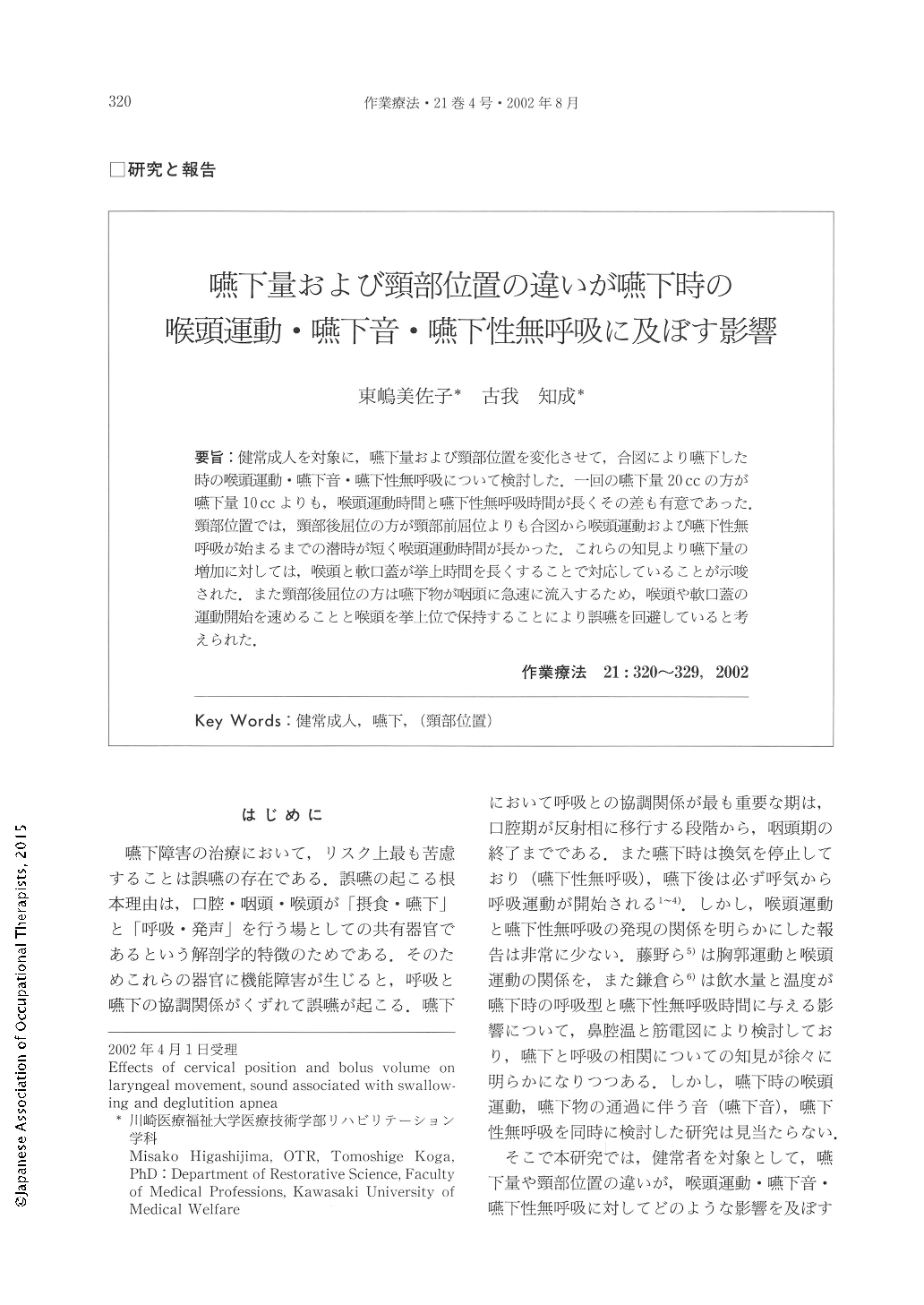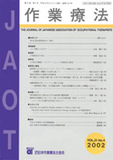Japanese
English
- 販売していません
- Abstract 文献概要
- 1ページ目 Look Inside
- 参考文献 Reference
- サイト内被引用 Cited by
要旨:健常成人を対象に,嚥下量および頸部位置を変化させて,合図により嚥下した時の喉頭運動・嚥下音・嚥下性無呼吸について検討した.一回の嚥下量20ccの方が嚥下量10ccよりも,喉頭運動時間と嚥下性無呼吸時間が長くその差も有意であった.頸部位置では,頸部後屈位の方が頸部前屈位よりも合図から喉頭運動および嚥下性無呼吸が始まるまでの潜時が短く喉頭運動時間が長かった.これらの知見より嚥下量の増加に対しては,喉頭と軟口蓋が挙上時間を長くすることで対応していることが示唆された.また頸部後屈位の方は嚥下物が咽頭に急速に流入するため,喉頭や軟口蓋の運動開始を速めることと喉頭を挙上位で保持することにより誤嚥を回避していると考えられた.
This study was conducted to investigate effects of cervical position and bolus volume on laryngeal movement, sound associated with swallowing and deglutition apnea during voluntary swallowing indicated by onset of a red lamp. Duration of laryngeal movement and deglutition apnea were significantly elongated when subjects swallowed 20 cc water compared with 10 cc water. In 10 degree dorsiflexion, latencies of laryngeal movement and deglutition apnea were significantly shortened and duration of laryngeal movement was elongated compared with those in 20 degree anteflexion. From these findings, it was suggested that healthy subjects retain elevated positions of the larynx and palatum molle to prevent misswallowing due to large volumes of bolus. Water rapidly flowed into the larynx in dorsiflexion. Thus, it was further suggested that subjects prevent misswallowing by shortening onset of larynx and palatum molle movement and elongation of laryngeal elevation when they swallowed in dorsiflexion.

Copyright © 2002, Japanese Association of Occupational Therapists. All rights reserved.


